 W
WHome to the Cradle of Civilization, the Middle East—interchangeable with the Near East—has seen many of the world's oldest cultures and civilizations. This history started from the earliest human settlements, continuing through several major pre- and post-Islamic Empires through to the nation-states of the Middle East today.
 W
WThe 2018–2020 Arab protests, also referred to as the Second Arab Spring and Arab Summer are massive anti-government protests in several Arab countries, including Morocco, Tunisia, Jordan, Sudan, Algeria, Egypt, Iraq, Lebanon, and Syria. Economic protests also took place in the Gaza Strip.
 W
WThe Achaemenid Empire, also called the First Persian Empire, was an ancient Iranian empire based in Western Asia founded by Cyrus the Great. Ranging at its greatest extent from the Balkans and Eastern Europe proper in the west to the Indus Valley in the east, it was larger than any previous empire in history, spanning 5.5 million square kilometers. It is notable for its successful model of a centralised, bureaucratic administration, for its multicultural policy, for building infrastructure such as road systems and a postal system, the use of an official language across its territories, and the development of civil services and a large professional army. The empire's successes inspired similar systems in later empires.
 W
WAl-Aḥsāʾ, also known as al-Ḥasāʾ (الْحَسَاء) or Hajar (هَجَر), is a traditional oasis historical region in eastern Saudi Arabia whose name is used by the Al-Ahsa Governorate, which makes up much of that country's Eastern Province. The oasis is located about 60 km (37 mi) inland from the coast of the Persian gulf.
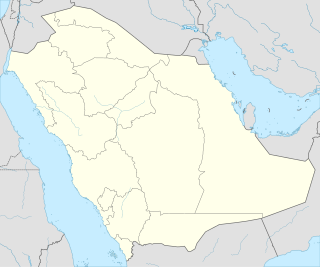 W
WAl-ahsa water spring is a flowing water spring, as described in the book Oasis of Al-Ahsa, by author Federico S. Vidal, which he wrote in 1952 when he was working in the Arabian-American Oil Company (ARAMCO) and he submitted it to Harvard University as a subject for his doctorate degree thesis in 1964. The estimated number of Al-ahsa springs is between sixty and seventy springs, including four huge springs. They flow individually sometimes, or in groups and it is artesian in its flow. The approximate flow of the spring is about 150 thousand gallons in a minute. The springs vary in depth significantly, ranging between 500 feet (150 m) to 600 feet (180 m) and the depth of some of the large springs is just a little off the earth's surface. The water of the spring is warm, the temperature ranges between 80 °F (27 °C) and 90 °F (32 °C), however, some of them are considered as hot springs, with a temperature of over 90 °F (32 °C), and Najim spring counts as one of the hot springs with sulfur water.
 W
WAlexandria Carmania was one of the seventy-plus cities founded or renamed by Alexander the Great.
 W
WAlexandria Prophthasia also known as Alexandria in Drangiana was one of the seventy-plus cities founded or renamed by Alexander the Great. The town was founded during an intermediate stop between Herat, the location of another of Alexander's fortresses, and Kandahar.
 W
WThe Alids are an Arab community, found predominantly in the Arab world and the South Asian countries. Alids are the one who were accepted as the descendants of Caliph Ali ibn Abi Talib, cousin and son-in-law of Islamic prophet Muhammad, through all his wives.
 W
WUnited States foreign policy in the Middle East has its roots in the 18th century Barbary Wars in the first years of the United States of America's existence, but became much more expansive in the aftermath of World War II. American policy during the Cold War tried to prevent Soviet Union influence by supporting anti-communist regimes and backing Israel against Soviet-sponsored Arab countries. The U.S. also came to replace the United Kingdom as the main security patron of the Persian Gulf states in the 1960s and 1970s, to ensure a stable flow of Gulf oil. The U.S. has diplomatic relations with all countries in the Middle East except for Iran, whose 1979 revolution brought to power a staunchly anti-American regime.
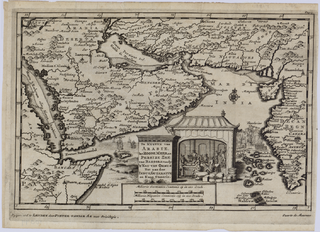 W
WThe Andanis River, also known as the Ananis and Anamis, was a river known to Ancient Greece.
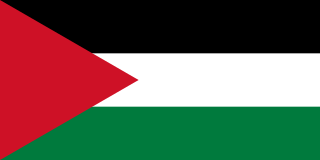 W
WThe Hashemite Arab Federation was a short-lived country that was formed in 1958 from the union of Iraq and Jordan. Although the name implies a federal structure, it was de facto a confederation.
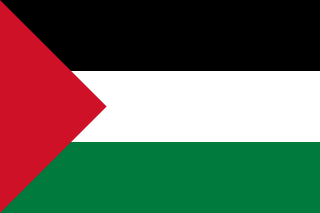 W
WThe Arab Socialist Ba'ath Party – Iraq Region, officially the Iraqi Regional Branch, is an Iraqi Ba'athist political party founded in 1951 by Fuad al-Rikabi. It was the Iraqi regional branch of the original Ba'ath Party before changing its allegiance to the Iraqi-dominated Ba'ath movement following the 1966 split within the original party. The party was officially banned following the American invasion of Iraq, but despite this it still continues to function.
 W
WThe Arab Socialist Ba'ath Party – Syria Region, officially the Syrian Regional Branch, is a neo-Ba'athist organisation founded on 7 April 1947 by Michel Aflaq, Salah al-Din al-Bitar and followers of Zaki al-Arsuzi. It was first the regional branch of the original Ba'ath Party (1947–1966) before it changed its allegiance to the Syrian-dominated Ba'ath movement (1966–present) following the 1966 split within the original Ba'ath Party. The party has ruled Syria continuously since the 1963 Syrian coup d'état which brought the Ba'athists to power.
 W
WThe Arab Spring was a series of anti-government protests, uprisings, and armed rebellions that spread across much of the Arab world in the early 2010s. It began in response to oppressive regimes and a low standard of living, starting with protests in Tunisia. From Tunisia, the protests then spread to five other countries: Libya, Egypt, Yemen, Syria, and Bahrain, where either the ruler was deposed or major uprisings and social violence occurred including riots, civil wars, or insurgencies. Sustained street demonstrations took place in Morocco, Iraq, Algeria, Iranian Khuzestan, Lebanon, Jordan, Kuwait, Oman, and Sudan. Minor protests took place in Djibouti, Mauritania, Palestine, Saudi Arabia, and the Moroccan-occupied Western Sahara. A major slogan of the demonstrators in the Arab world is ash-shaʻb yurīd isqāṭ an-niẓām.
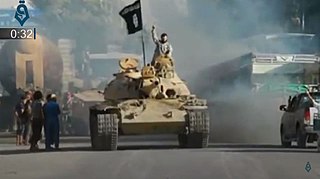 W
WThe Arab Winter is a term for the resurgence of authoritarianism, and Islamic extremism evolving in the aftermath of the Arab Spring protests in Arab countries. The term "Arab Winter" refers to the events across Arab League countries in the Mid-East and North Africa, including the Syrian Civil War, the Iraqi insurgency and the following civil war, the Egyptian Crisis, the Libyan Crisis and the Crisis in Yemen. Events referred to as the Arab Winter include those in Egypt that led to the removal of Mohamed Morsi and the seizure of power by General Abdel Fattah el-Sisi in an anti-Muslim Brotherhood campaign.
 W
WThe Arab Socialist Baʽath Party was a political party founded in Syria by Michel Aflaq, Salah al-Din al-Bitar, and associates of Zaki al-Arsuzi. The party espoused Baʽathism, which is an ideology mixing Arab nationalist, pan-Arabism, Arab socialist, and anti-imperialist interests. Baʽathism calls for unification of the Arab world into a single state. Its motto, "Unity, Liberty, Socialism", refers to Arab unity, and freedom from non-Arab control and interference.
 W
WThe Arab Socialist Ba'ath Party, also referred to as the pro-Iraqi Ba'ath movement, is a Ba'athist political party which was headquartered in Baghdad, Iraq until 2003. It is one of two parties which emerged from the 1966 split of the original Ba'ath Party.
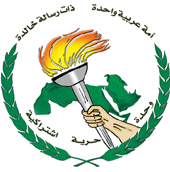 W
WThe Arab Socialist Ba'ath Party, also referred to as the pro-Syrian Ba'ath movement, is a neo-Ba'athist political party with branches across the Arab world. The party emerged from a split in the Ba'ath Party in February 1966 and leads the government in Syria. From 1970 until 2000, the party was led by the Syrian president Hafez al-Assad. As of 2000, leadership has been shared between his son Bashar al-Assad and Abdullah al-Ahmar. The Syrian branch of the party is the largest organisation within the Syrian-led Ba'ath Party.
 W
WBab al-Salam is one of the seven ancient city-gates of Damascus, Syria. During the Roman era, it was also known as "Gate of the Moon".
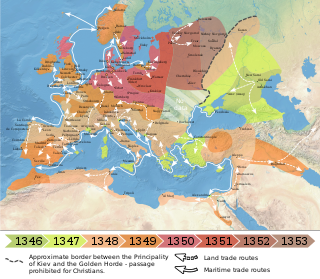 W
WThe Black Death was the deadliest pandemic recorded in human history. The Black Death pandemic resulted in the deaths of up to 75–200 million people in Eurasia and North Africa, peaking in Europe from 1347 to 1351. Plague, the disease, was caused by the bacterium Yersinia pestis. The Y. pestis infection most commonly results in bubonic plague, but can also cause septicaemic or pneumonic plagues.
 W
WBritish foreign policy in the Middle East has involved multiple considerations, particularly over the last two and a half centuries. These included maintaining access to British India, blocking Russian or French threats to that access, protecting the Suez Canal, supporting the declining Ottoman Empire against Russian threats, guaranteeing an oil supply after 1900 from Middle East fields, protecting Egypt and other possessions in the Middle East, and enforcing Britain's naval role in the Mediterranean. The timeframe of major concern stretches from the 1770s when the Russian Empire began to dominate the Black Sea, down to the Suez Crisis of the mid-20th century and involvement in the Iraq War in the early 21st. These policies are an integral part of the history of the foreign relations of the United Kingdom.
 W
WBakhtshooa Gondishapoori were Persian or Assyrian Nestorian Christian physicians from the 7th, 8th, and 9th centuries, spanning six generations and 250 years. The Middle Persian-Syriac name which can be found as early as at the beginning of the 5th century refers to the eponymous ancestor of this "Syro-Persian Nestorian family". Some members of the family served as the personal physicians of Caliphs. Jurjis son of Bukht-Yishu was awarded 10,000 dinars by al-Mansur after attending to his malady in 765CE. It is even said that one of the members of this family was received as physician to Imam Sajjad during his illness in the events of Karbala.
 W
WThe chronology of the ancient Near East is a framework of dates for various events, rulers and dynasties. Historical inscriptions and texts customarily record events in terms of a succession of officials or rulers: "in the year X of king Y". Comparing many records pieces together a relative chronology relating dates in cities over a wide area. For the first millennium BC, the relative chronology can be matched to actual calendar years by identifying significant astronomical events. An inscription from the tenth year of Assyrian king Ashur-Dan III refers to an eclipse of the sun, and astronomical calculations among the range of plausible years date the eclipse to 15 June 763 BC. This can be corroborated by other mentions of astronomical events, and a secure absolute chronology established, tying the relative chronologies to our own calendar.
 W
WThe 1947–1948 civil war in Mandatory Palestine was the first phase of the 1947–1949 Palestine war. It broke out after the General Assembly of the United Nations adopted a resolution on 29 November 1947 recommending the adoption of the Partition Plan for Palestine.
 W
WThe area known as the "Near East" is usually referred to as Middle East in modern contexts. For periods predating Classical Antiquity, the common term is Ancient Near East. The Near East is generally associated with Anatolia, the Levant, Mesopotamia, Persia, Egypt, the Arabian Peninsula, and the Caucasus.
 W
WDiscovery! The Search for Arabian Oil is a non-fiction book written by Pulitzer Prize winning American author Wallace Stegner.
 W
WA dragoman was an interpreter, translator, and official guide between Turkish, Arabic, and Persian-speaking countries and polities of the Middle East and European embassies, consulates, vice-consulates and trading posts. A dragoman had to have a knowledge of Arabic, Persian, Turkish, and European languages.
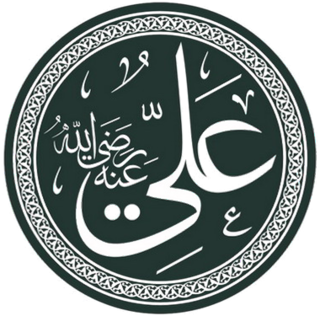 W
WAlī ibn Abī Ṭālib was an early Islamic leader. Ali is revered by Sunni Muslims as the fourth Rightly Guided Caliphs, and as a foremost religious authority on the Qur'an and Fiqh. Shi'a Muslims consider him the First Imam appointed by the Islamic prophet Muhammad and the first rightful caliph. Ali was the cousin of Muhammad, and after marriage to Fatimah he also became Muhammad's son-in-law. His descendants through Fatimah are revered today by both Shia and Sunnis as Sayyids.
 W
WAlī ibn Abī Ṭālib was an early Islamic leader. Ali is revered by Sunni Muslims as the fourth Rightly Guided Caliphs, and as a foremost religious authority on the Qur'an and Fiqh. Shi'a Muslims consider him the First Imam appointed by the Islamic prophet Muhammad and the first rightful caliph. Ali was the cousin of Muhammad, and after marriage to Fatimah he also became Muhammad's son-in-law. His descendants through Fatimah are revered today by both Shia and Sunnis as Sayyids.
 W
WGulashkird also known as Faryjab or Paryjab or Valashgird was an important town in Kerman Province of Iran during the Middle Ages as a station on the trade routes from The Persian Gulf and Persia to India and also into Central Asia.
 W
WAl-Hirah was an ancient city in Mesopotamia located south of what is now Kufa in south-central Iraq.
 W
WThe History of the Prophets and Kings, more commonly known as Tarikh al-Tabari or Tarikh-i Tabari or The History of al-Tabari is an Arabic-language historical chronicle written by the Persian historian Muhammad ibn Jarir al-Tabari. It begins with the Creation to 915 AD, and contains detail concerning Muslim and Middle Eastern history. An al-Sila, appendix or continuation, was written by Abu Abdullah b. Ahmad b. Ja'far al-Farghani, a Turk student of al-Tabari.
 W
WKitab al-I'tibar is the autobiography of Usama ibn-Munqidh, an Arab Syrian diplomat, soldier of the 12th century, hunter, poet and nobleman.
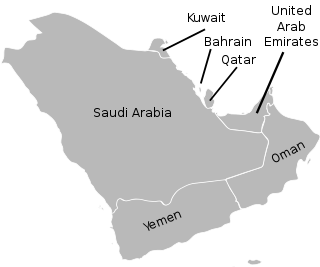 W
WThis is a list of rulers of the Arabian Peninsula.
 W
WThe Mediterranean Sea was the central superhighway of transport, trade and cultural exchange between diverse peoples encompassing three continents: Western Asia, North Africa, and Southern Europe. The history of the cultures and people of the Mediterranean Basin is important for understanding the origin and development of the Mesopotamian, Egyptian, Canaanite, Phoenician, Hebrew, Carthaginian, Greek, Persian, Illyrian, Thracian, Etruscan, Iberian, Roman, Byzantine, Bulgarian, Arab, Berber, Ottoman, Christian and Islamic cultures.
 W
WMesopotamia is a historical region of Western Asia situated within the Tigris–Euphrates river system, in the northern part of the Fertile Crescent. In terms of the modern nation-state it corresponds with much of Iraq, Kuwait, the eastern parts of Syria, Southeastern Turkey, and regions along the Turkish–Syrian and Iran–Iraq borders.
 W
WThe Minab River is a river in Sistan and Baluchestan, Iran, near Harmosia.
 W
WThis is a list of modern conflicts in the Middle East ensuing in the geographic and political region known as the Middle East. The "Middle East" is traditionally defined as the Fertile Crescent (Mesopotamia), Levant, and Egypt and neighboring areas of Arabia, Anatolia and Iran. It currently encompasses the area from Egypt, Turkey and Cyprus in the west to Iran and the Persian Gulf in the east, and from Turkey and Iran in the north, to Yemen and Oman in the south.Conflicts are separate incidents with at least 100 casualties, and are listed by total deaths, including sub-conflicts. The term "modern" refers to the First World War and later period, in other words, since 1914.
 W
WThe Kirkuk–Haifa oil pipeline was a crude oil pipeline from the oil fields in Kirkuk, located in the former Ottoman vilayet of Mosul in northern Iraq, through Transjordan to Haifa in mandatory Palestine. The pipeline was operational between 1935 and 1948. Its length was about 942 kilometres (585 mi), with a diameter of 12 inches (300 mm), and it took about 10 days for crude oil to travel the full length of the line. The oil arriving in Haifa was distilled in the Haifa refineries, stored in tanks, and then put in tankers for shipment to Europe.
 W
WOdeh Spring is a historical natural underground deep sulphur spring in Saudi Arabia, Eastern Province, Qatif, specifically in Tarout Island. Odeh Spring history goes back more than four thousand years. It contained mineral water where people utilized it to cure diseases and illnesses. Odeh Spring used to produce hot water and vapor in winter, and lukewarm water in the summer. In spite of all the different attempts and efforts to revive it, the spring is currently depleted.
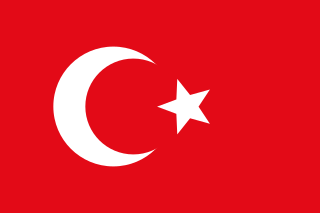 W
WOttoman Iraq refers to the period of the history of Iraq when the region was ruled by the Ottoman Empire .Before reforms (1534–1704), Iraq was divided into four Eyalets (provinces):Baghdad Eyalet Shahrizor Eyalet Basra Eyalet Mosul Eyalet
 W
WThe Ottoman–Mamluk War of 1516–1517 was the second major conflict between the Egypt-based Mamluk Sultanate and the Ottoman Empire, which led to the fall of the Mamluk Sultanate and the incorporation of the Levant, Egypt, and the Hejaz as provinces of the Ottoman Empire. The war transformed the Ottoman Empire from a realm at the margins of the Islamic world, mainly located in Anatolia and the Balkans, to a huge empire encompassing much of the traditional lands of Islam, including the cities of Mecca, Cairo, Damascus, and Aleppo. Despite this expansion, the seat of the empire's political power remained in Constantinople.
 W
WThe relationship between Nazi Germany (1933–1945) and the leadership of the Arab world encompassed contempt, propaganda, collaboration, and in some instances emulation. Cooperative political and military relationships were founded on shared hostilities toward common enemies, such as the United Kingdom and the French Third Republic, along with communism, and Zionism. Another key foundation of this collaboration was the anti-Semitism of the Nazis and their hostility towards the United Kingdom and France, which was admired by some Arab and Muslim leaders, most notably the Grand Mufti of Jerusalem, Amin al-Husseini. In public and private, Adolf Hitler and Heinrich Himmler made warm statements about Islam as a religion and political ideology, describing it as a more disciplined, militaristic, political, and practical form of religion than Christianity, and commending what they perceived to be Muhammad's skill in politics and military leadership. However, the official Nazi racial ideology also considered Arabs and North Africans to be racially inferior to Germans, a sentiment echoed by Hitler and other Nazi leaders to deprecate them. Hitler left no doubt about his disdain for the Arab world, writing in Mein Kampf: "As a völkisch man, who appraises the value of men on a racial basis, I am prevented by mere knowledge of the racial inferiority of these so-called 'oppressed nations' from linking the destiny of my own people with theirs".
 W
WRudkhanah-i-Duzdi also known as the Nahr-az-Zankan River was a river in Medieval Southern Persia. Mentioned by Marco Polo, Istakhri and by Yaqut al-Hamawi Its name means River of Robbers.
 W
WShabankara or Shabankareh was the name of a tribal federation of Iranian nomads who resided some parts of the Zagros mountains. They claimed descent from the mythical Iranian king Manuchehr, and are thought to be descendants of Daylamites who had followed the Buyid dynasty from northern Iran, or "Kurds" who had been deported to eastern Fars from Isfahan by the Buyid shahanshah 'Adud al-Dawla. The dynasty's capital was Ij (Ig).
 W
WThe Shapur II's Arab campaign took place in 325, against numerous Arab tribes, due to the Arab incursions into the Sasanian Empire. Shapur II decisively defeated all the Arab tribes during his campaign, and became known as Dhū al-Aktāf to the Arabs, meaning “he who pierces shoulders”.
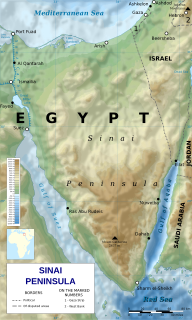 W
WThe Sinai Peninsula or simply Sinai is a peninsula in Egypt, and the only part of the country located in Asia. It is between the Mediterranean Sea to the north and the Red Sea to the south, and is a land bridge between Asia and Africa. Sinai has a land area of about 60,000 km2 (23,000 sq mi) and a population of approximately 600,000 people. Administratively, the vast majority of the area of the Sinai Peninsula is divided into two governorates: the South Sinai Governorate and the North Sinai Governorate. Three other governorates span the Suez Canal, crossing into African Egypt: Suez Governorate on the southern end of the Suez Canal, Ismailia Governorate in the center, and Port Said Governorate in the north.
 W
WThe Third Fitna, was a series of civil wars and uprisings against the Umayyad Caliphate beginning with the overthrow of Caliph al-Walid II in 744 and ending with the victory of Marwan II over the various rebels and rivals for the caliphate in 747. However, Umayyad authority under Marwan II was never fully restored, and the civil war flowed into the Abbasid Revolution (746–750) which culminated in the overthrow of the Umayyads and the establishment of the Abbasid Caliphate in 749/50. Thus a clear chronological delimitation of this conflict is not possible.
 W
WThis timeline tries to compile dates of important historical events that happened in or that led to the rise of the Middle East. The Middle East is the territory that comprises today's Egypt, the Persian Gulf states, Iran, Iraq, Palestine, Cyprus and Northern Cyprus, Israel, Jordan, Lebanon, Oman, Saudi Arabia, Syria, Turkey, Gaza Strip, UAE, & Yemen. The Middle East with its particular characteristics was not to emerge until the late second millennium AD. To refer to a concept similar to that of today's Middle East but earlier in time, the term Ancient Near East is used.
 W
WThe Umayyad Caliphate was the second of the four major caliphates established after the death of Muhammad. The caliphate was ruled by the Umayyad dynasty. The third caliph of Rashidun Caliphate, Uthman ibn Affan, was also a member of the Umayyad clan. The family established dynastic, hereditary rule with Muawiya ibn Abi Sufyan, long-time governor of al-Sham, who became the sixth caliph after the end of the First Muslim Civil War in 661. After Mu'awiyah's death in 680, conflicts over the succession resulted in a Second Civil War and power eventually fell into the hands of Marwan I from another branch of the clan. The region of Syria remained the Umayyads' main power base thereafter, and Damascus was their capital.
 W
WWomen played a variety of roles in the Arab Spring, but its impact on women and their rights is unclear. The Arab Spring was a series of demonstrations, protests, and civil wars against authoritarian regimes that started in Tunisia and spread to much of the Arab world. The leaders of Tunisia, Egypt, Libya, and Yemen were overthrown; Bahrain has experienced sustained civil disorder, and the protests in Syria have become a civil war. Other Arab countries experienced protests as well.
 W
WThe Mediterranean and Middle East Theatre was a major theatre of operations during the Second World War. The vast size of the Mediterranean and Middle East theatre saw interconnected naval, land, and air campaigns fought for control of the Mediterranean, North Africa, the Horn of Africa, the Middle East and Southern Europe. The fighting in this theatre lasted from 10 June 1940, when Italy entered the war on the side of Germany, until 2 May 1945 when all Axis forces in Italy surrendered. However, fighting would continue in Greece – where British troops had been dispatched to aid the Greek government – during the early stages of the Greek Civil War.
 W
WThe Middle East Theatre of World War II is defined largely by reference to the British Middle East Command, which controlled Allied forces in both Southwest Asia and eastern North Africa. From 1943, most of the action and forces concerned were in the adjoining Mediterranean Theatre.